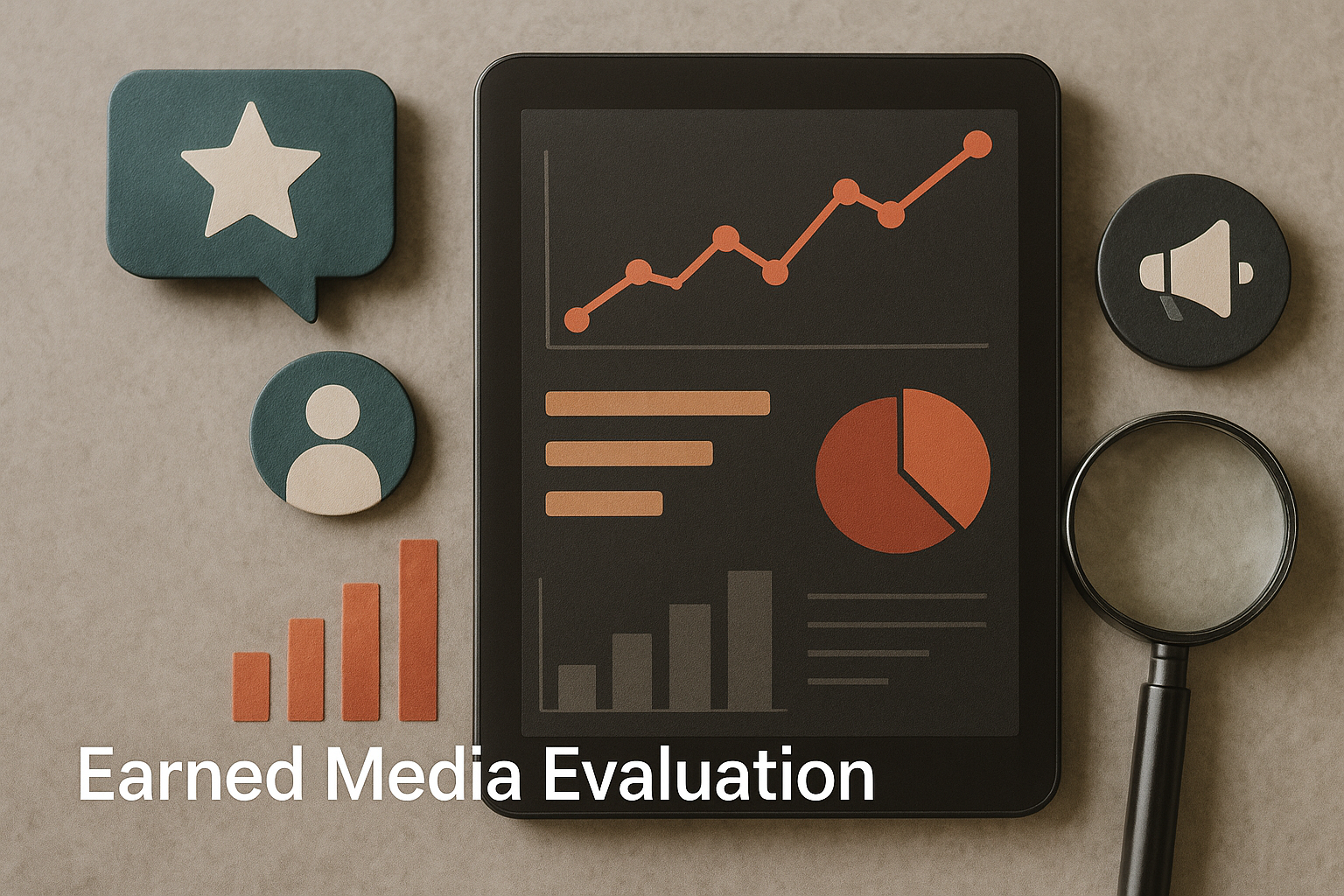Here’s how global PR services take your brand worldwide.
The world may feel borderless online, but in the media world, boundaries still matter. A headline that wins hearts in New York might fall flat in Tokyo. That’s where global PR services step in. Bridging cultures, languages, and markets to make your story travel farther than ever before.
Today, brands don’t just speak to one audience; they speak to many, all at once. But reaching them isn’t about sending the same press release everywhere. It’s about knowing the rules, the culture, and even the unspoken nuances of each market.
From international media relations to cross-border storytelling, global PR is part strategy, part art form. Done right, it turns local voices into worldwide conversations. And in a world where attention is the new currency, that’s a skill every brand needs.
What Are Global PR Services?
AI Generated Image
If you’ve ever watched a brand make headlines in multiple countries at once, you’ve seen global PR services in action. As PR specialists at Impact Authority would say, “It’s public relations without borders. Strategically shaping a brand’s message so it resonates with audiences across different cultures, languages, and media landscapes.”
But let’s be clear: this isn’t just “PR on a bigger map.” It’s a whole different game with its own set of rules.
Beyond Local PR
Local PR focuses on building relationships and coverage within one region or country. It works beautifully when your audience is concentrated. But when your market spreads across continents, you need more than local contacts, you need a global approach.
Global PR blends international media relations, cross-border campaign planning, cultural adaptation, and multilingual storytelling. It ensures that your message lands with the right impact whether it’s read in London, Dubai, or São Paulo.
Who Needs It?
Almost any brand with global ambitions can benefit. Multinational corporations rely on it to maintain a consistent voice worldwide. Startups use it to break into new markets faster. Even NGOs and public figures turn to global PR to inspire action across borders.
The common goal? A message that feels local everywhere it goes.
The Key Ingredients
Global PR services typically include:
- International Media Outreach – Building relationships with journalists and outlets in different countries.
- Cross-Border PR Campaigns – Tailoring campaigns for cultural and market differences.
- Localized Content Creation – Going beyond translation to capture tone, humor, and cultural references.
- Global Crisis Management – Coordinating consistent, timely responses across time zones.
Each of these elements works together to create a seamless narrative—one that adapts to local tastes without losing the brand’s global identity.
Why It Matters
In today’s connected world, news spreads instantly. A press release shared in one country can appear across the globe within minutes. That reach is powerful—but it also carries risks. A phrase that resonates in one culture may trigger controversy in another.
This is where Travel PR Companies play a vital role. They ensure your brand’s message remains strong, relevant, and culturally sensitive no matter where it’s heard. Their expertise lies in anticipating cultural differences before they become obstacles, helping your brand build trust and global recognition.
The Core Pillars of Global PR
AI Generated Image
Every great building stands on strong foundations. The same goes for global PR services. Without the right pillars, the whole strategy wobbles. These pillars keep your brand steady, consistent, and adaptable as it steps into new markets. Let’s break them down.
1. International Media Relations
You can’t win global attention without talking to the right people. International media relations is about more than sending press releases—it’s about building trust with journalists, editors, and influencers across different countries.
Each region has its own media culture. In the US, bold and concise pitches work. In Japan, formality and detailed information matter more. The key is to approach each market on its own terms, while still keeping your core brand voice intact.
2. Cross-Border PR Campaigns
One size doesn’t fit all. A campaign that takes off in Paris might flop in Singapore if you don’t adapt it. Cross-border PR campaigns tailor your message for each audience, without losing your brand’s heart.
This means understanding cultural nuances, local trends, and even timing. Launching a major announcement during a local holiday? You might miss your audience entirely.
3. Multilingual Content Creation
Translation is easy. True localization? That’s an art. Simply swapping words from one language to another won’t cut it. Humor, idioms, and tone often get lost in direct translation.
Multilingual content creation ensures your press releases, interviews, and social media posts feel native to each market. Done right, people won’t just understand your message—they’ll feel it was made for them.
4. Crisis Communication on a Global Scale
Bad news doesn’t respect borders. A brand crisis in one country can quickly make headlines worldwide. That’s why global crisis communication is essential.
The goal? Deliver a consistent, clear, and culturally sensitive response everywhere—fast. That means coordinating messages across time zones, languages, and media channels so your brand speaks with one voice.
Bringing It All Together
These four pillars don’t work in isolation. International media relations builds connections. Cross-border campaigns give them relevance. Multilingual content ensures cultural fit. Crisis communication keeps the trust intact.
When combined, they form the backbone of global PR services, helping brands communicate powerfully, no matter the distance. And in today’s world, where stories can leap continents in seconds, these pillars aren’t just helpful, they’re essential.
Challenges in Global PR
Photo by Mark Fletcher-Brown on Unsplash
Global PR sounds exciting. Your message flying across borders, reaching millions. But behind the glamour lies a set of tricky challenges. Even the most experienced teams face obstacles when navigating different markets. Understanding these hurdles is the first step toward overcoming them.
1. Cultural Differences
What makes people laugh in one country might offend in another. A gesture, a color, even a phrase can carry a completely different meaning. That’s why cultural awareness is critical.
Brands that ignore this risk turning a well-meant campaign into a public blunder. The fix? Research, local insights, and listening to voices on the ground. In global PR services, cultural respect isn’t optional. It’s the foundation of trust.
2. Legal and Regulatory Barriers
Media laws vary wildly from place to place. What you can say freely in one country might be restricted in another. Advertising regulations, copyright rules, and even press release formats can change from market to market.
If you’re not careful, a single misstep could result in fines or banned content. That’s why smart PR teams work closely with legal experts who understand each country’s rules.
3. Time Zones and Communication Gaps
Coordinating a campaign across continents can feel like juggling while blindfolded. While you’re just waking up, your partners in another country may already be wrapping up their day.
This time difference can delay approvals, slow down crisis responses, and make teamwork harder. The solution? Clear planning, shared tools, and overlapping work hours whenever possible.
4. Fragmented Media Landscapes
The media world is not one-size-fits-all. Some countries still rely heavily on newspapers and TV. Others lean toward digital-first platforms or regional social media networks you may have never heard of.
Without understanding these differences, your message may never reach the right audience. Global PR requires mapping out each market’s media ecosystem and tailoring outreach accordingly.
Turning Obstacles into Opportunities
Yes, these challenges are real. But they’re not deal-breakers. In fact, when handled well, they can strengthen your global strategy. Cultural differences can inspire creative storytelling. Legal compliance can build credibility. Even time zone hurdles can encourage better organization.
In the end, challenges are part of what makes global PR services so valuable. They push brands to think smarter, listen more, and craft messages that truly connect—wherever in the world they land.
Strategies for Successful International Media Coverage
Photo by Kaleidico on Unsplash
Getting international media coverage isn’t about luck. It’s about strategy. The right approach can turn your brand from a local name into a global conversation starter. With global PR services, success comes from a mix of preparation, cultural awareness, and smart networking. Here’s how to make it happen, using Impact Authority’s own playbook.
1. Map the Local Media Landscape
Before you pitch a story, you need to know who you’re talking to. Every country has its own mix of influential newspapers, TV channels, digital outlets, and social platforms. In some places, radio still reigns. In others, TikTok might be the top source of news for younger audiences.
Research each market. Learn the formats, deadlines, and preferences of local journalists. A well-placed story in the right publication can open more doors than a hundred generic press releases.
2. Use Global Newswire Services—But With Care
Platforms like PR Newswire, Business Wire, and GlobeNewswire can distribute your announcement to multiple countries within minutes. These platforms are excellent for broad reach, but a Digital PR agency knows that relying on them alone is not enough.
To maximize impact, combine newswire distribution with targeted, personal outreach. Journalists are far more likely to engage with a tailored pitch that demonstrates you understand their audience and deliver content that adds real value.
3. Leverage Social Media for Cross-Border Reach
Social platforms are a powerful way to amplify your story, if you use them wisely. In China, WeChat and Weibo dominate. In Japan, LINE is popular. In Russia, VK is king.
Don’t just post the same message everywhere. Adapt your visuals, hashtags, and tone for each platform. Social listening tools can also help track conversations and identify local influencers who can boost your coverage.
4. Partner with Local PR Agencies
No one understands a market better than the people who live and work in it. Partnering with local PR agencies gives you access to insider knowledge, established media relationships, and cultural insight.
This approach often leads to richer, more authentic coverage than trying to manage everything from a distance. Plus, local teams can quickly spot opportunities—or potential problems—you might miss.
Connecting the Dots
International media coverage isn’t about throwing your message out and hoping it sticks. It’s about knowing where to aim, how to adapt, and who to work with.
By combining media mapping, thoughtful use of distribution tools, culturally tailored social content, and local partnerships, global PR services can help your brand break through borders and stay relevant in every market you enter.
Tools & Technology for Global PR
Photo by Marvin Meyer on Unsplash
In the past, global PR meant endless spreadsheets, phone calls at odd hours, and a lot of guesswork. Today, technology has changed the game. The right tools can help you plan campaigns, track coverage, and connect with media across the globe—all without losing your mind. In global PR services, tech isn’t just a convenience; it’s a competitive edge.
1. PR Management Platforms
Platforms like Meltwater, Cision, and Muck Rack make it easier to find journalists, manage press lists, and monitor coverage in real time. They’re like a central hub for your global outreach—keeping contacts organized, pitches tracked, and results measurable.
With these tools, you can see who’s writing about your industry, what angles they prefer, and even when they’re most likely to respond.
2. Media Monitoring Across Markets
When your brand is active in multiple countries, you can’t manually track every mention. Media monitoring tools do the heavy lifting—scanning newspapers, websites, TV, radio, and social media in different languages.
This not only helps measure the impact of your campaigns but also alerts you to trends, opportunities, or potential crises before they spiral.
3. Translation and Localization Tools
Google Translate is a starting point, not a solution. For professional PR, tools like Smartling, Transifex, or Lokalise help streamline multilingual content creation. They integrate with your workflow so you can translate, localize, and review content faster.
Pairing these tools with human translators ensures your message keeps its meaning, tone, and cultural nuance.
4. AI-Powered Insights
AI is becoming a powerful ally in global PR. Sentiment analysis tools can detect how audiences feel about your brand in different languages and regions. AI can also help with content suggestions, audience targeting, and even pitch personalization—saving time without sacrificing quality.
5. Collaboration and Project Management Tools
With teams scattered across time zones, tools like Slack, Trello, and Asana keep everyone in sync. They make it easier to coordinate press releases, approve content, and track deadlines, no matter where your colleagues are.
Bringing It All Together
Technology doesn’t replace creativity—it supports it. By combining the human touch of storytelling with the precision of modern tools, global PR services can run smoother, react faster, and deliver bigger results.
In a fast-moving media landscape, the right tech stack isn’t just nice to have—it’s the difference between staying ahead and getting left behind.
Measuring Global PR Success
AI Generated Image
A great global PR campaign isn’t just about making noise—it’s about making an impact. But how do you know if your message is actually landing in all those different markets? In global PR services, measuring success is as important as crafting the story itself. Without clear measurement, you’re flying blind.
1. Tracking Media Coverage
The first sign of success is seeing your brand in the right places. Track how many outlets covered your story, which countries they’re in, and how prominent the placement was.
Quality matters as much as quantity. A feature in a respected industry magazine often outweighs a dozen mentions on low-traffic blogs.
2. Measuring Audience Reach
Reach tells you how many people could have seen your story. This includes print circulation, TV viewership, website traffic, and social media impressions.
However, don’t stop at the numbers—ask yourself if you’re reaching the right audience. Ten thousand views from your target market are more valuable than a million from the wrong crowd.
3. Analyzing Sentiment
Not all coverage is good coverage. Sentiment analysis helps you understand whether the conversation around your brand is positive, neutral, or negative.
Tools like Brandwatch or Meltwater can scan articles and social media posts in multiple languages to gauge how people feel about your message.
4. Monitoring Engagement
In the digital age, success isn’t just about who sees your content—it’s about who interacts with it. Track clicks, shares, comments, and mentions across platforms.
Engagement shows that your message is sparking interest and conversation, not just passing through unnoticed.
5. Calculating ROI
At the end of the day, PR is an investment. Compare your campaign costs to the value it generated—whether in sales, leads, partnerships, or brand visibility. While ROI can be tricky to measure in PR, tying results to business goals ensures your efforts are driving real outcomes, not just vanity metrics.
Turning Insights into Action
Measurement isn’t the final step—it’s a feedback loop. The data you collect should guide your next campaign, helping you double down on what works and refine what doesn’t.
When used strategically, tracking and analysis make global PR services smarter, sharper, and more effective over time. After all, the goal isn’t just to tell your story worldwide—it’s to make sure it’s being heard, understood, and remembered.
Future Trends in Global PR
AI Generated Image
Global PR is evolving faster than ever. The strategies that worked a few years ago may already feel outdated. Audiences are changing. Media habits are shifting. Technology is rewriting the rules. To stay ahead, brands, and the global PR services they rely on, must keep an eye on what’s next.
1. AI-Driven Campaigns
Artificial intelligence is no longer just a buzzword. PR teams are already using AI to analyze data, predict media trends, and personalize pitches at scale. Soon, AI could help create real-time multilingual content tailored to specific markets—making global storytelling faster and sharper than ever.
2. Rise of Micro-Influencers
Big-name influencers still have their place, but micro-influencers are gaining ground. They have smaller audiences but higher trust levels within niche communities. For global campaigns, partnering with local micro-influencers can create authentic connections that mass advertising often misses.
3. Digital-First Strategies in Emerging Markets
In many emerging markets, audiences are skipping traditional media altogether and going straight to digital platforms. This shift means brands need to think beyond TV or newspapers and focus on mobile-first, social-first campaigns tailored for regional platforms.
4. Real-Time, Borderless Storytelling
With news and social content spreading in seconds, brands can’t afford slow approval processes. Future PR will require more agile teams, capable of reacting in real time to opportunities and crises—while still ensuring messages are culturally sensitive.
5. Greater Focus on ESG and Purpose-Driven PR
Audiences worldwide are paying closer attention to a brand’s environmental, social, and governance (ESG) actions. Global PR will increasingly revolve around transparency, ethics, and genuine purpose. This shift isn’t just about image. It’s about building long-term trust.
6. Hyper-Personalized Messaging
Generic campaigns are fading. Data-driven insights will allow brands to craft highly personalized messages for specific regions, demographics, and even individual users, making each audience feel seen and valued.
Embracing the Future
The future of global PR services will be faster, more digital, and more personalized than ever before. Brands that embrace AI, local influencers, and purpose-driven storytelling will have an edge. Those that cling to old models risk being left behind.
But here’s the good news. While the tools and tactics may change, the heart of PR stays the same. It’s still about telling powerful stories, building real relationships, and earning trust. The future just gives us new ways to do it, on a scale we’ve never seen before
Conclusion
Stories cross borders in seconds. That’s why staying local is no longer enough. Global PR services give brands the power to speak many languages, literally and culturally, while keeping one consistent voice.
It’s not just about press releases or media lists. It’s about understanding people, respecting differences, and finding common ground that connects us all.
From navigating cultural nuances to mastering international media, global PR is both an art and a strategy. And when done right, it turns a brand into a name people recognize, trust, and talk about. No matter where they live.
So, whether you’re launching in one new market or twenty, remember this: the world is listening. The question is, are you ready to be heard?




